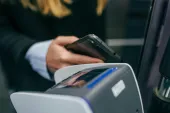
The wallet of the future
By Jason WongMobile financial services (MFS) today encompass a variety of offerings from mobile banking, bill and credit card payments to money transfer and cashless payments, catering to the different usage demands of developed and developing markets. The convenience of having a mobile wallet is extended to every individual who carries a mobile device. With an estimated 83% of the world’s population holding a mobile device as of end 2010 , the potential user-base and demand for MFS is significant. MFS presents a huge opportunity for financial institutions to address the needs of the unbanked population in the emerging markets of Asia, currently estimated at 1.6 billion adults .
Unbanked users can access financial services via a mobile wallet. This will allow them to remit money on the go and make money transfers without the need for physical bank branches. . The appealing factor of MFS is its ability to fill the gap left by limited access to bank and internet services.
On the flip side, Asia’s developed markets like Singapore and Japan’s usage of MFS centers around credit/ debit card and online bank account management as well as bill payments. These markets reflect strong adoption of near field communication (NFC) technology for the purpose of public transport ticketing and mobile payment for retail. We are witnessing a strong uptake in this space as Gemalto partners in Japan and Singapore to roll out trial programmes for NFC mobile payments. The value of mobile payments for digital and physical goods, money transfers and NFC transactions is expected to reach USD670 billion by 2015 , up from USD240 billion this year.
Though the number of NFC-enabled mobile handsets are now limited, it is certainly increasing. . The growth of NFC-enabled mobile devices is projected to reach 151 million handsets in 2014, up from 834,000 in 2010 .
Rather than seeing MFS as a competitor to alternative payment methods such as credit cards, Gemalto believes that it will play a complementary role in the evolving payment ecosystem. Consumers may still prefer to use credit cards to pay for big-ticket items, while MFS can be used for micro payments.
The future of payments is definitely set to change and develop as MFS gains widespread acceptance and adoption, not just in Asia and throughout the world.
Jason Wong, Solutions Director (Asia), Telcom Business Unit, Gemalto




















 Advertise
Advertise







